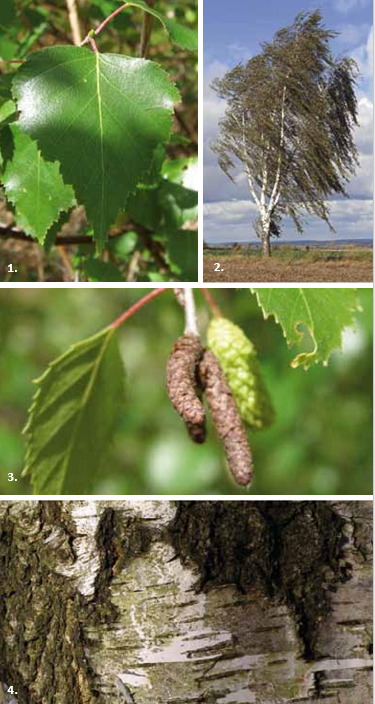Betula pendula

Betula pendula
Sand birch, Weeping birch
Bierk
Bouleau de sable, bouleau pleureur
Sandbirke, Hängebirke
Size:
The weeping birch grows up to 30 m tall, but only about 100 years old, with a trunk diameter of about 80 cm.
Leaf:
The leaf shape is varied, from pointed-triangular to diamond-shaped, 3-6 cm long. In autumn the leaves turn golden yellow. The young twigs are covered with small warts and are rough to the touch.
Flower/fruit:
The flower appears before or with the leaf shoots. The male yellow catkins are intensely dusty and cause severe pollen allergies. The female catkins are greenish and remain on the tree as fruit catkins. In early autumn they release countless tiny winged nutlets.
Wood:
Birch wood is tough and elastic, but only slightly hard. Woodturners value it. It is popular in the furniture industry because of its grain. Due to the resin-rich bark, it has a high calorific value. The striking white bark reflects a lot of sunlight and protects the tree from overheating. The outer layers can be peeled off the tree like paper.
Trivia/Use:
The birch has few site requirements and thrives best on dry, well-aerated sandy soils. As a typical pioneer tree species (first coloniser), it requires a lot of light. They are also very hardy. Their foliage improves the soil. The roots grow very densely and shallowly. Slabs and paths are strongly raised after only a few years. Birch sap is used for cosmetic purposes (birch water). In the past, a type of tar was also extracted from it.



